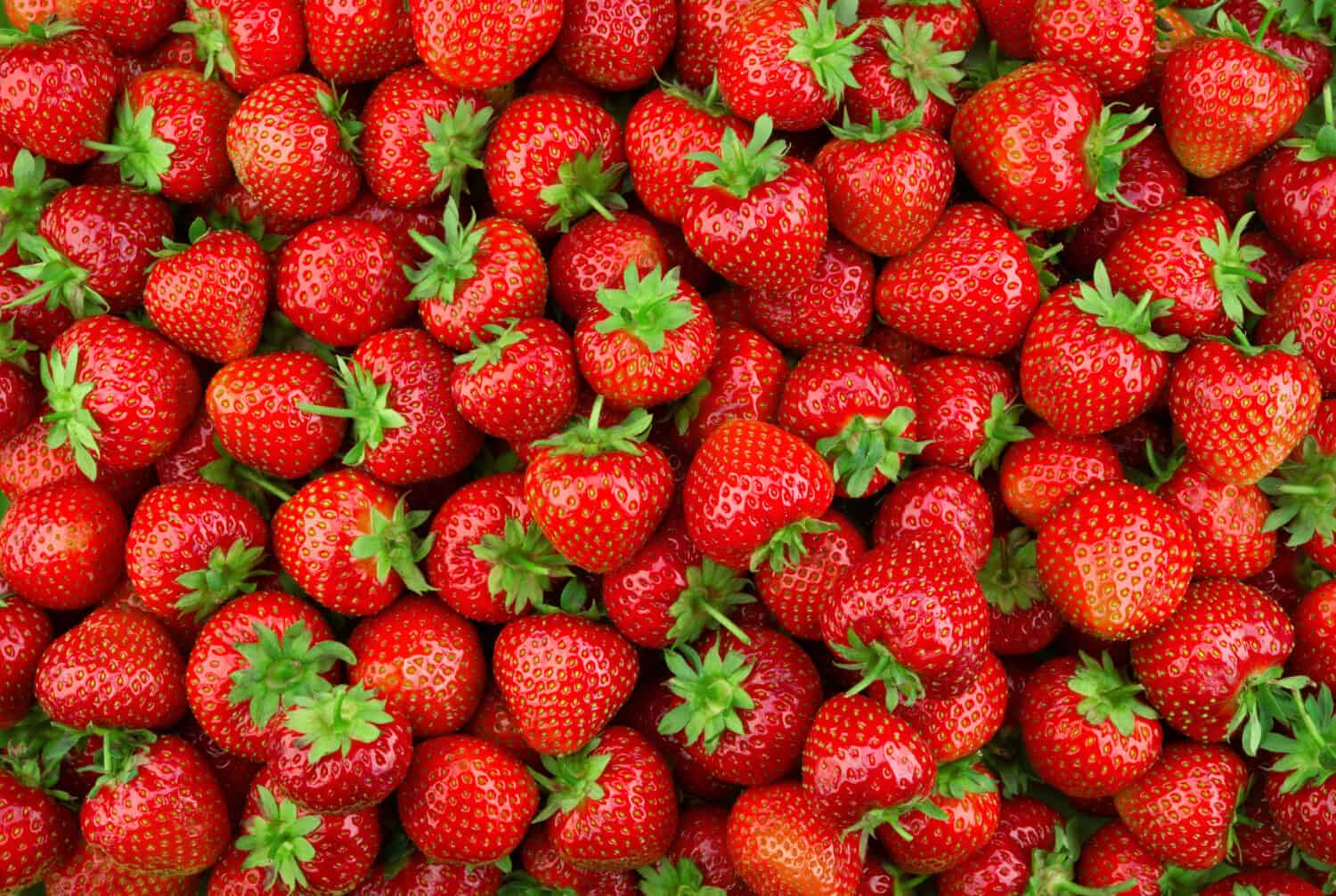Get ready to embark on a berrylicious journey as we dive into the wonderful world of freezing strawberries. If you’re a fan of these juicy, red gems but find yourself with more than you can gobble up, freezing is the answer. It’s a simple, fuss-free way to preserve their freshness and scrumptiousness. And luckily, there are a few different ways you can freeze strawberries to use them for later. Let’s dive into our in-depth guide on freezing strawberries! But first, let’s learn a bit about why freezing strawberries is such a good idea.
Why Should You Freeze Strawberries?
Freezing strawberries is a smart choice for several reasons. The ability to keep their flavor and freshness means that one of the key advantages is that you may continue to enjoy the taste of ripe strawberries even when they are out of season. When strawberries are at their ripest, you can freeze them to preserve their natural sweetness and nutrients.
Extended Shelf Life
Another reason to freeze strawberries is to extend their shelf life. Fresh strawberries can spoil relatively quickly, which can be frustrating if you’re not able to consume them immediately. The strawberries’ shelf life is efficiently extended by freezing because it stops the natural ripening process and inhibits the growth of germs that cause spoiling. In the long term, this can help you save money and lessen food waste.
Convenience and Versatility
Frozen strawberries offer great convenience and versatility. They can be frozen and kept for a long time, allowing you the freedom to use them whenever you need to. Your frozen strawberries are available and ready to use, whether you want to add a cool twist to your morning smoothie, bake them into pies or muffins, or just eat them as a cold and sweet snack. This makes meal preparation and planning much simpler since you always have a flexible component available.
Nutrient Retention
Freezing strawberries is a reliable method to retain their nutritional value. Strawberries are rich in vitamins, minerals, and antioxidants that offer numerous health benefits. Freezing preserves these valuable nutrients, ensuring that you can still get a dose of essential vitamins like vitamin C, even during the off-season.
A Cost-Effective Solution
Buying fresh strawberries off-season can be expensive due to the increased demand and reduced supply. Freezing strawberries when they are in abundance and more affordable can be a cost-effective solution. You can buy them in bulk when they’re in season, freeze them, and enjoy their flavors without breaking the bank.

Growing strawberries at home and then freezing the excess crop is a great way to save money.
©V_Sot_Visual_Content/Shutterstock.com
How to Freeze Whole Strawberries
It’s simple to freeze entire strawberries, so you can continue to enjoy their sweet, delicious flavor even when they aren’t in season. You can make sure that your frozen strawberries maintain their flavor and freshness for future use by following these easy steps.
Step 1: Choose Ripe Strawberries
Select strawberries that are fully ripe for freezing. Ripe strawberries are at their peak flavor and sweetness, ensuring that you capture the best taste when freezing them.
Step 2: Wash and Dry
Thoroughly wash the strawberries under cool, running water. Gently rub the surface to remove any dirt or debris. After washing, place the strawberries on a clean towel or paper towel to air dry. It’s essential to ensure that the strawberries are completely dry before freezing to prevent the formation of ice crystals.
Step 3: Prepare the Strawberries
Remove the green stems and leaves from the strawberries. You can do this by gently twisting the stems or using a small knife to carefully cut them out. This step is crucial as the stems can become tough and bitter when frozen.
Step 4: Arrange on a Baking Sheet
Lay the prepared strawberries on a baking sheet in a single layer. Make sure they are not touching each other to prevent them from sticking together during freezing. Using a baking sheet allows for individual freezing, which makes it easier to portion out the amount you need when using them later.
Step 5: Flash Freeze
Put the strawberry-filled baking sheet in the freezer. Give the strawberries approximately an hour or two to freeze separately. The strawberries won’t bunch up in the storage container thanks to this process known as flash freezing.
Step 6: Transfer to Containers
Once the strawberries are each thoroughly frozen, move them into airtight freezer-safe plastic or glass containers or resealable ziploc bags. Push out as much air as you can to prevent freezer burn. Label the containers or bags with the date the strawberries were frozen to keep track of their freshness.
Step 7: Return to the Freezer
Put the containers or bags back into your freezer after labeling them. Store your frozen strawberries at a consistent temperature of 0 degrees F or lower. Proper storage temperature ensures that the frozen strawberries remain safe to eat and maintain their overall quality.
How to Freeze Chopped or Sliced Strawberries
Freezing chopped or sliced strawberries is a convenient way to have these delicious berries ready for various culinary creations, from smoothies to baked goods. Following these simple steps will ensure that your frozen strawberries maintain their taste and quality for future use.
Step 1: Selecting the Right Strawberries
Opt for ripe and firm strawberries when choosing berries for freezing. Ripe strawberries are sweet and full of flavor, while firm ones hold up better during chopping and freezing.
Step 2: Washing and Drying
Start by washing the strawberries under cool, running water. Gently rub them to remove any dirt or residues. After washing, pat them dry with a clean kitchen towel or paper towel. Ensuring they are completely dry prevents ice crystals from forming during freezing.
Step 3: Chopping or Slicing
Using a clean cutting board and a sharp knife, chop or slice the strawberries according to your preference. You can slice them into rounds or chop them into smaller pieces, depending on how you plan to use them later. Consistent size helps with even freezing.
Step 4: Prepare for Freezing
Spread the chopped or sliced strawberries onto a baking sheet in a single layer. This arrangement prevents the pieces from sticking together and allows for individual freezing, making it easier to grab the desired amount later.
Step 5: Flash Freezing
Place the baking sheet with the strawberries in the freezer. Allow them to freeze for about one to two hours. Flash freezing ensures that the individual pieces freeze quickly, preserving their texture and preventing clumping.
Step 6: Transfer to Freezer-Safe Containers
Once the strawberries are flash-frozen, transfer them to freezer-safe containers or ziploc bags. Squeeze out excess air before sealing to minimize the risk of freezer burn. Remember to label the containers or bags with the date for easy tracking.
Step 7: Storing in the Freezer
Return the containers or bags to the freezer and store them at a constant temperature of 0 degrees F or lower. Proper storage conditions are essential to maintain the strawberries’ taste and quality.
How to Freeze Blended Strawberries
Freezing blended strawberries is an efficient way to preserve their fresh, vibrant taste for future use in smoothies, sauces, and desserts.
Step 1: Choosing the Right Strawberries
As with the previous steps, choose fully ripe strawberries for freezing. Ripe strawberries not only provide the best taste but also contribute to a smoother texture in the final product.
Step 2: Washing and Preparing
Thoroughly wash the strawberries under cool, running water to remove any dirt or debris. Remove the stems and leaves. Once cleaned, allow the strawberries to drain and dry on a clean kitchen towel or paper towel.
Step 3: Blending the Strawberries
Place the cleaned and dried strawberries in a blender. Pulse the blender until the strawberries are fully pureed into a smooth consistency. If desired, you can add a bit of lemon juice or sugar to enhance the flavor and preserve the vibrant color.
Step 4: Portioning for Freezing
Determine the portion sizes that you’ll need for future recipes. Pour the blended strawberry puree into ice cube trays or silicone molds. This method makes it easier to measure and thaw the exact amount needed for various dishes.
Step 5: Cover and Freeze
Cover the ice cube trays or molds with plastic wrap or aluminum foil to prevent freezer odors from affecting the puree. Place the trays or molds in the freezer and allow the strawberry puree to freeze completely. This usually takes a few hours.
Step 6: Transferring to Containers
Once the strawberry puree cubes are frozen, carefully remove them from the trays or molds. Transfer the cubes into freezer-safe containers or bags. Press out any excess air and seal tightly.
Step 7: Proper Storage
Label the containers or bags with the date of freezing and return them to the freezer. As always, store the strawberry puree at a consistent temperature of 0 degrees F or lower. This ensures that the puree maintains its taste and quality until you’re ready to use it.
How to Freeze Strawberries Using the Sugar-Pack Method
The sugar pack method is an excellent way to freeze strawberries while maintaining their natural flavor and sweetness. This simple technique not only preserves the berries but also creates a delightful syrup that can be used in various dishes.
Step 1: Select Fresh Strawberries
Again, you’ll want to opt for fresh, ripe strawberries that are free from blemishes. Ripe strawberries not only taste better but also retain their texture and color during freezing.
Step 2: Washing and Preparing
To get rid of any residue or debris, gently wash the strawberries under cold running water. Allow them to air dry after washing on a fresh kitchen towel or some paper towels. To stop ice crystals from developing, make sure they are fully dry.
Step 3: Remove Stems and Slice
Remove the green stems and leaves from the strawberries. You can do this by either twisting them off or using a knife to carefully cut them out. Then, slice the strawberries into your preferred size—halves or quarters work well.
Step 4: Mixing with Sugar
In a mixing bowl, combine the sliced strawberries with granulated sugar. Use about ½ to ¾ cup of sugar for every 4 cups of sliced strawberries. Gently toss the strawberries in the sugar until they are well coated. The sugar will help preserve the strawberries and draw out their juices.
Step 5: Rest and Stir
For 15 to 20 minutes, let the strawberry-sugar combination remain at room temperature. During this period, the sugar will dissolve and pull the strawberry’s natural juices out, resulting in a sugary syrup.
Step 6: Packing and Freezing
Carefully transfer the strawberry-sugar mixture into airtight freezer-safe containers, tempered glass jars, or resealable plastic bags. Ensure that the containers or bags are tightly sealed to prevent freezer burn. Leave some space at the top to allow for expansion during freezing.
Step 7: Label and Store
Store the containers or bags in the freezer at a constant temperature of 0 degrees F or below and mark them with the date of freezing. The strawberry slices and syrup may be used in several dishes after thawing.

Homemade smoothies are just one of many delicious and healthy things you can make with frozen strawberries.
©Maridav/Shutterstock.com
What to Make With Frozen Strawberries
With their versatility, frozen strawberries can be used in a variety of delectable recipes. There are several ways to utilize frozen strawberries to make a broad selection of mouthwatering dishes, regardless of whether you are in the mood for something sweet, tart, or refreshing.
Smoothies and Shakes
Frozen strawberries are a go-to ingredient for crafting creamy and nutritious smoothies. Blend them with yogurt, milk, or a milk alternative for a luscious treat packed with vitamins and antioxidants. Customize your smoothie with other fruits, greens, and protein for a filling and satisfying beverage.
Desserts Galore
Frozen strawberries shine in desserts. Whip up strawberry ice cream, sorbet, or frozen yogurt by blending the strawberries with sweeteners and cream. Create irresistible parfaits, trifles, or strawberry shortcakes by layering thawed strawberries with whipped cream and cake. Their natural sweetness elevates everything from pies and tarts to cheesecakes.
Sauces and Syrups
Thawed frozen strawberries can be transformed into vibrant sauces and syrups. Simmer them with a touch of sugar or honey to create a delightful topping for pancakes, waffles, or French toast. Drizzle the syrup over ice cream, yogurt, or even grilled meats for a unique flavor profile.
Baked Goods
Fold frozen strawberries into muffin, scone, or pancake batters to infuse them with bursts of fruity goodness. Make strawberry-studded bread or coffee cake for a delightful morning treat. Frozen strawberries also lend themselves to fruity turnovers, hand pies, and galettes that will impress any dessert lover.
Refreshing Beverages
Create refreshing beverages by adding frozen strawberries to lemonade, iced tea, or sparkling water for a burst of flavor. Blend them with fresh herbs and citrus for unique mocktails. You can even freeze the strawberries directly into ice cubes to add a pop of color and taste to your drinks.
Salads
Surprise your taste buds by incorporating frozen strawberries into salads. Toss them with fresh greens, nuts, cheese, and a zesty vinaigrette for a refreshing and satisfying dish. The strawberries add a touch of sweetness that complements various salad ingredients.
Nutrient-Packed Oatmeal
Elevate your morning routine by stirring thawed frozen strawberries into your oatmeal. The berries add natural sweetness and vibrant color while contributing essential vitamins and fiber to your breakfast.
Garnishes and Decorations
Thawed frozen strawberries can be sliced and used as decorative garnishes for desserts, drinks, and even savory dishes. They’re visually appealing and can add a touch of elegance to your culinary creations.
Thank you for reading! Have some feedback for us? Contact the AZ Animals editorial team.








